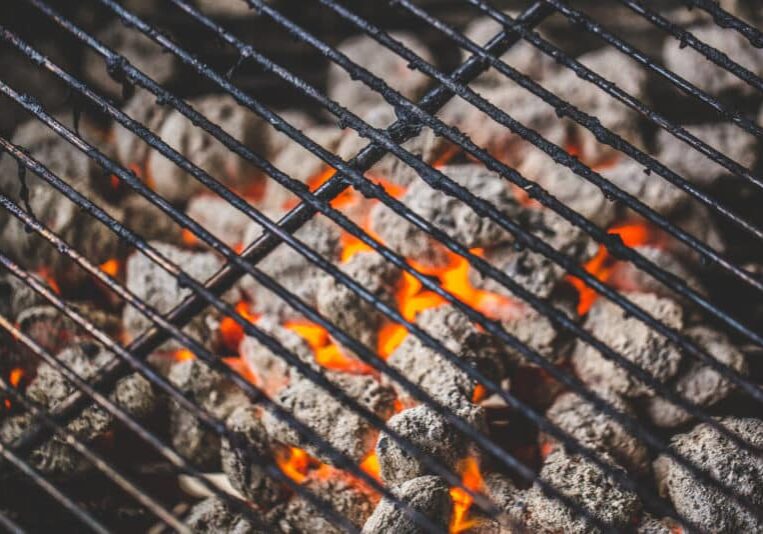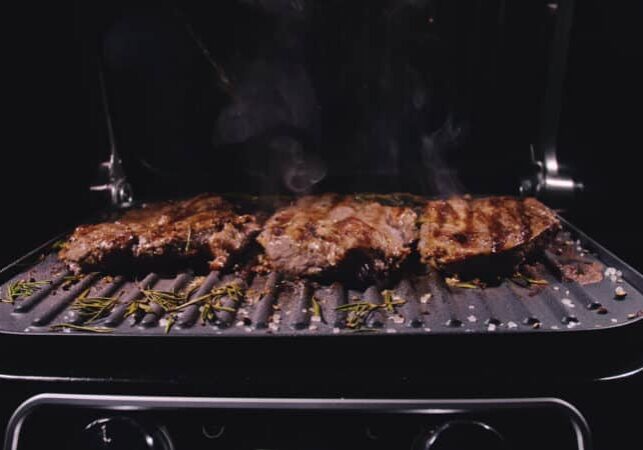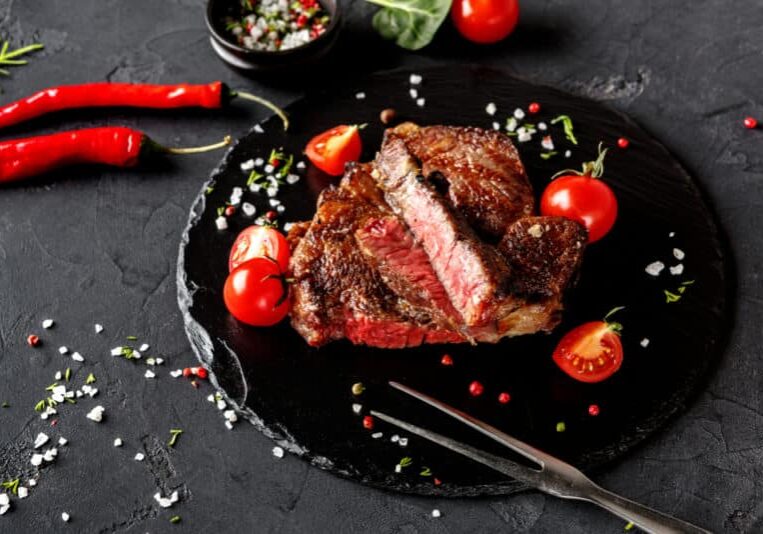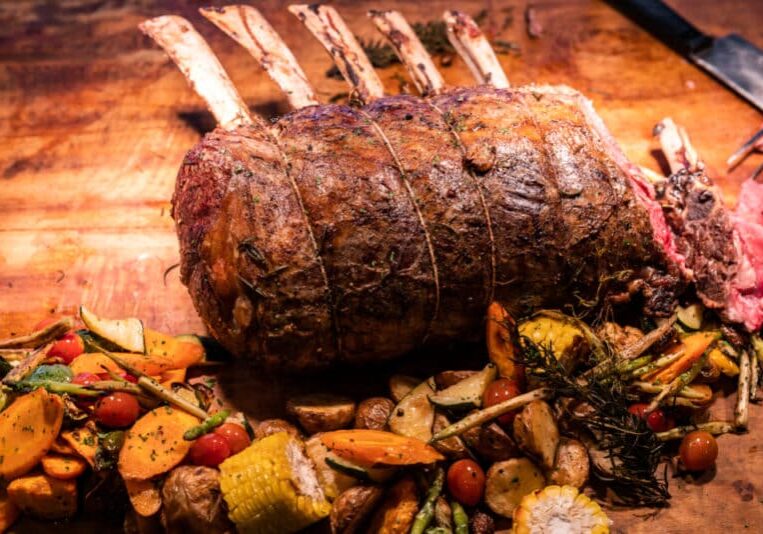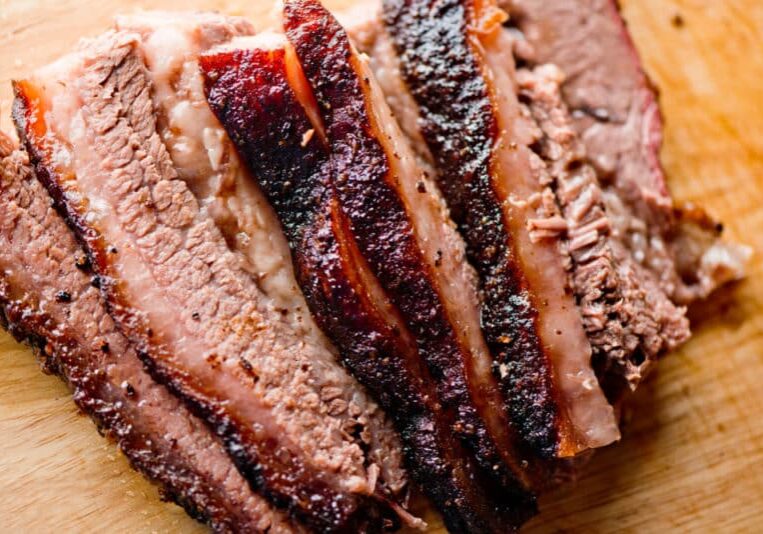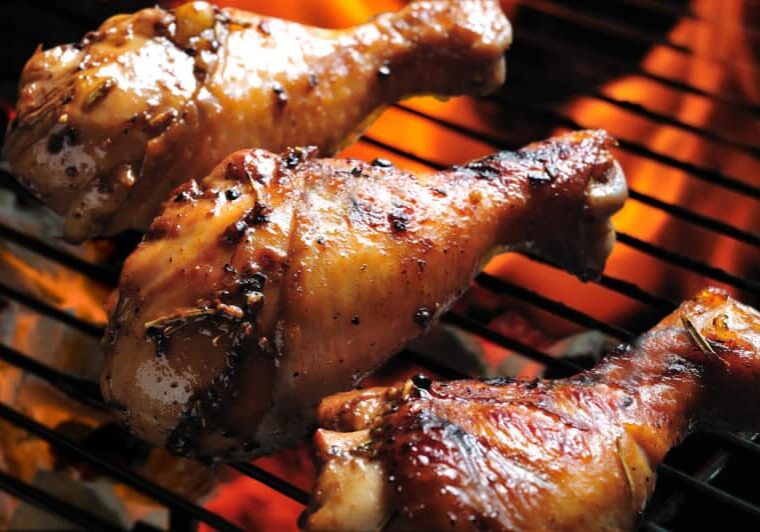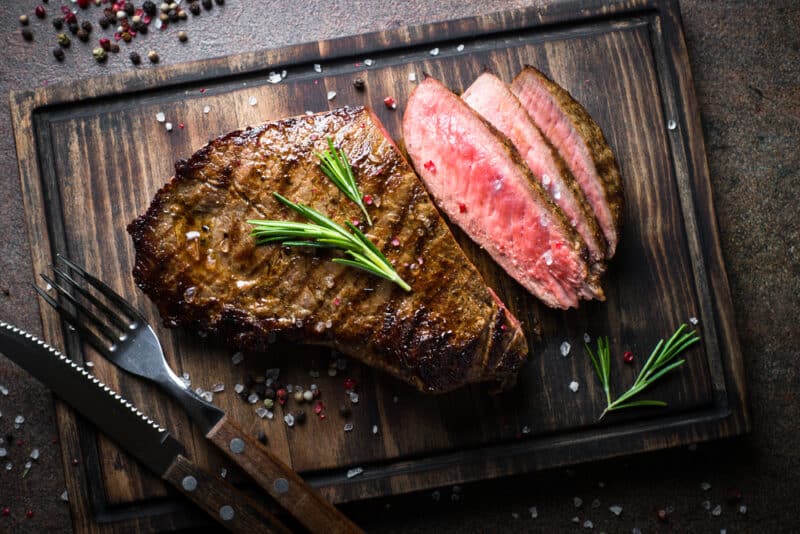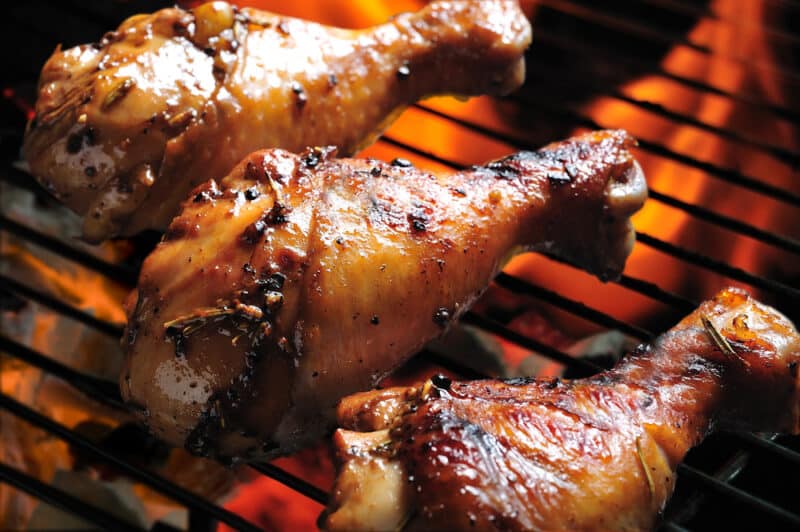How Long to Smoke Brisket at 250-degrees
TheGrillingMaster.com is reader-supported. If you buy something using the links on our site, we might earn an affiliate commission at no added cost to you. This helps us pay our staff to keep making awesome content for you!
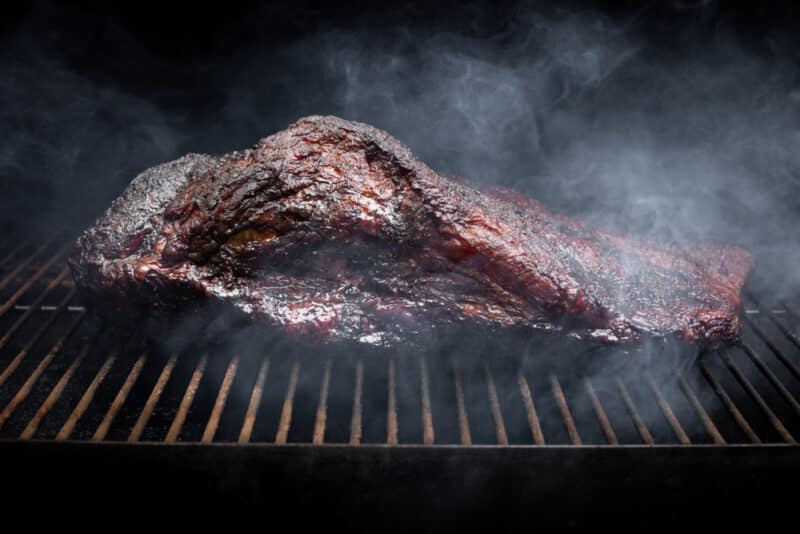
It’s tough to say exactly how long it will take to smoke brisket at 250 degrees Fahrenheit – it depends on the size, how thick it is, how much fat it has, and the doneness you want to achieve. Generally, smoking brisket at 250 degrees takes between 1 and 1.5 hours per pound of meat.
If you have a regular 10–12-pound brisket, it is a large cut that will take roughly 10 to 15 hours to smoke at 250 °F. However, grill masters use the approximate time only as a guide when planning the process of smoking a whole-packer brisket, and even when smoking the flat or point only.
The entire packer comprises two muscles, the brisket flat and the brisket point, the latter is the fattest, but you’ll have to remove excess fat. However, the marbling of the entire cut is going to dictate a large part of the cooking experience and the moistness of the smoked beef brisket.
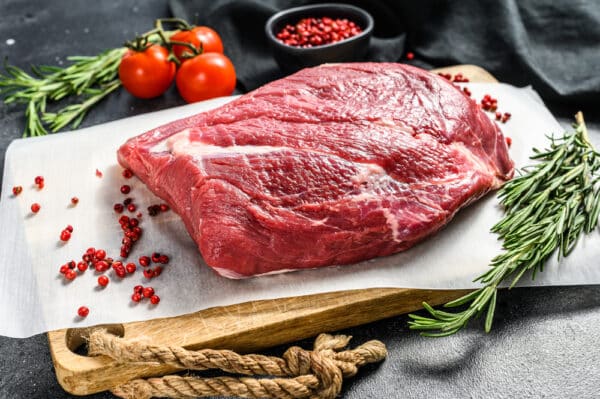
The only way to determine how far along the smoking process is by using a meat thermometer to measure the internal temperature of the brisket. Once the internal temperature reaches 195 to 205 °F at the thickest part of the brisket, it can be removed from the smoker to rest.
Why does brisket take so long to cook?
Brisket is a tough cut of beef that comes from the chest of the cow and has lots of gristly bits and collagen. To make it nice and juicy, you have to cook it for a while so the connective tissue breaks down – which can take anything from a few hours to as much as 12 or more, depending on the size of the brisket and your cooking method.
The heat produced in the cooking breaks down the collagen in the brisket into gelatin, making it juicy and flavorful.
All pitmasters aim to create a tender, flavorful brisket, but they have different methods to do so. Some use low-and-slow at 225°F, some go for the hot-and-fast method at higher temperatures around 300°F, and others think the best way is in between at 250°F.
However, it’s worth noting that briskets smoked at high temperatures are more likely to be less tender and juicy.
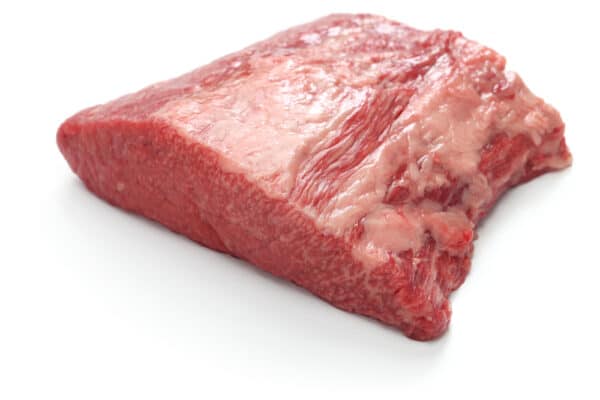
No matter what, smoking a brisket is a long and time-consuming process, depending on the smoker’s temperature and the size of the piece of meat.
Ultimately, smoking brisket at 225, 250, or 300 degrees depends on personal preference. We will focus on the process of smoking brisket at 250 °F in this article.
Related reading >> The Ultimate Guide to Brisket Spritz/Spray
What are the Benefits of Smoking Brisket?
If you’ve always cooked brisket in the oven, you may be curious about the techniques and hype around smoking it. Let’s look at why people don’t bother with oven-roasting brisket ever again after smoking it.
Unique Smoke Flavor: The smokiness you get in the brisket is unique, and unobtainable in any other method of cooking.
Moist and Juicy Result: Altogether, the mix of fat, breaking down the collagen, slow-cooking it, and making sure it rests at the end of the process, adds up to keeping brisket juicy and soft when smoked.
No Overcooking: Cooking at a low temperature (250°F) makes it almost impossible to overcook the meat in a smoker. So, you can be sure that your brisket will come out perfect every time!
The “Stall” – What is it and What to do About it?
When planning how long to smoke brisket, one of the aspects to consider is the stall.
In BBQ cooking, when you’re smoking big chunks of meat, like beef brisket, you might hit a “stall.” That’s when the internal temperature of the meat stops rising or even drops, which can be really annoying for the cook because it means the cooking takes way longer than you’d figured.
When you cook the meat in the smoker, the heat from the smoker can be canceled out by the evaporative cooling that happens when the moisture on the surface starts to evaporate.
This can cause the internal temperature of the meat to stay the same or even go down. It typically happens when the internal temperature of the brisket is between 150 °F and 170 °F.
To get past the obstacle of the stall, many BBQ chefs wrap the food in aluminum foil or butcher paper when the internal temperature reaches 150 °F, and then replace the wrapped brisket in the smoker for the final 2 hours.
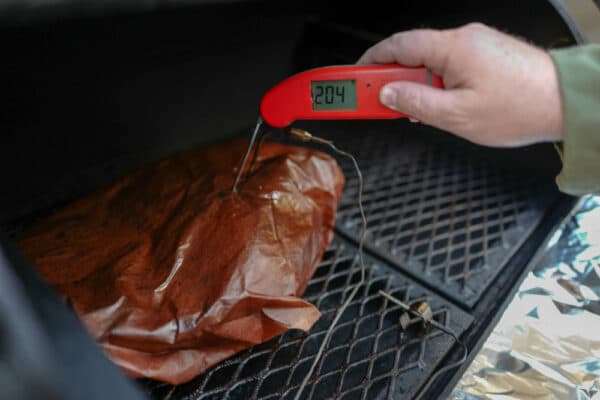
Doing this can stop the cooling off that happens when the moisture evaporates, and it lets the temperature climb more steadily to allow the cooking process to continue.
Some grill masters turn up the heat of the smoker to get through the stall more quickly, but that can make the meat less succulent.
Related reading >> Easy brisket Taco Recipe
How Many Hours Will it Take to Smoke a Brisket at 250 °F?
As mentioned, the weight of the brisket you want to smoke will give you an idea of the cooking time it will take to reach the ideal internal temperature of 195 °F. At 250 °F, the rule of thumb is 1 to 1.5 hours per lb brisket. For example, a 10-pound brisket will take 10 to 15 hours.
That would be the time to remove the brisket from the smoker, and let it rest for 1 to 2 hours.
The following table will save you from having to do the calculations. However, you should check for the stall about 2 hours before the final number indicated below. If the temp is between 150 °F and 170 degrees F, it’s time for the “Texas Crutch,” which is the wrapping process to get past the stall.
At that time, you should wrap the brisket in butcher’s paper or aluminum foil, and return it to the smoker for the final 2 hours before checking the internal temp again. It should be at, or close to 195 °F by then. This is the time to pull the brisket from the smoker and let it rest.
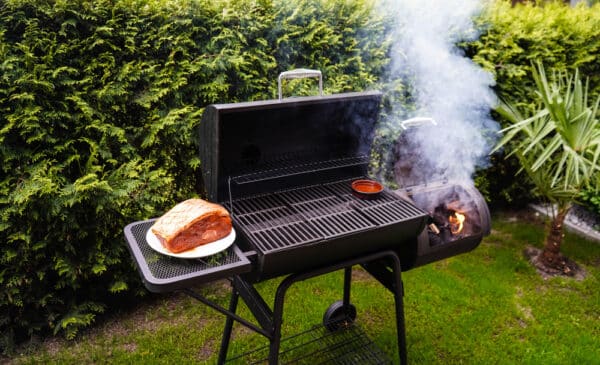
Approximate Time Table
|
Brisket Weight |
Ambient Temperature of the Smoker – 250 °F at 1 to 1.5 hours per pound |
|
1 Pound |
1 to 1.5 Hours |
|
2 Pounds |
2 to 3 Hours |
|
3 Pounds |
3 to 4.5 Hours |
|
4 Pounds |
4 to 6 Hours |
|
5 Pounds |
5 to 7.5 Hours |
|
6 Pounds |
6 to 9 Hours |
|
7 Pounds |
7 to 10.5 Hours |
|
8 Pounds |
8 to 12 Hours |
|
9 Pounds |
9 to 13.5 Hours |
|
10 Pounds |
10 to 15 Hours |
|
11 Pounds |
11 to 16.5 Hours |
|
12 Pounds |
12 to 18 Hours |
|
13 Pounds |
13 to 19.5 Hours |
|
14 Pounds |
14 to 21 Hours |
|
15 Pounds |
15 to 22.5 Hours |
|
16 Pounds |
16 to 24 Hours |
It is important to keep prep time in mind during the planning process. Trimming and seasoning the large cut of beef can add at least an hour to the overall smoking time.
Leaving the brisket to warm up to room temperature before putting it on the grill can accelerate the process slightly.
How to Know When the Brisket is Ready for the Rest
Although a meat thermometer is the best tool for checking the doneness of the brisket, other methods exist. Expert grill masters might use any of the following methods to know when to pull the brisket off the grill.
Visual Cues: You can tell if the brisket is done by looking at its color and the juices it releases. If the juices run clear and the meat isn’t pink anymore, it’s probably cooked through.
Probe test: Use a sharp object like a small knife, a fork, or even a toothpick. If it slides easily into the meat when you poke it, similar to the way it would go into butter, you have a tender brisket that is ready to be rested. If the brisket feels very tough – that is another sign it’s overcooked or not yet done.
The Bend Test: With this test, you need to pick up the brisket with a pair of tongs and gently try to bend it. You will know the brisket is done if you can bend it without it being too stiff – or without it breaking apart. If it does break and crack open, then you have likely overcooked the brisket and should remove it from the heat right away to salvage what you can.
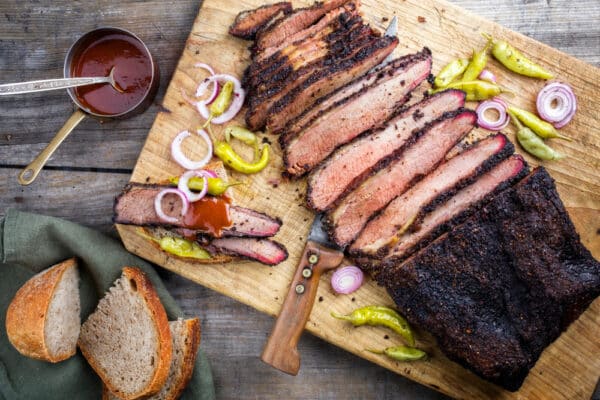
Why is it Important to Let the Brisket Rest?
When you cook meat, the heat causes the juices to move to the middle. If you slice it right away, all the juices will come out, leaving it dry and chewy. This applies regardless of whether you smoke the brisket at a cooking temperature of 250 °F or a lower temperature.
Letting it rest before cutting a smoked brisket is key to a juicy brisket because it gives the juices a chance to redistribute inside the meat, making it more mouthwatering, tender, and tasty.
Depending on the size of the cut of meat, this can take between one and two hours.
If you pull the brisket from the pellet grill when the internal temperature reaches 195 °F, the cooking will continue during the resting period.
The internal temp will rise to between 105 and 110 °F, which is the ideal temperature for the best brisket that is juicy, tender, and flavorful.
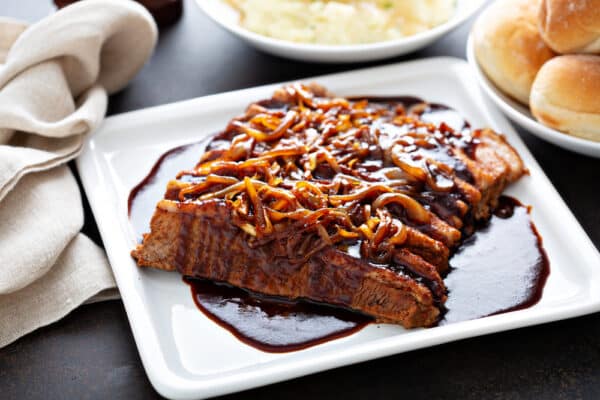
Frequently Asked Questions
Q: Should I smoke the brisket fat side down?
A: The best way to smoke a brisket depends on the individual’s preference. In our opinion, it’s recommended to have the fat cap facing upwards because that allows the fat to melt during cooking and disperse throughout the meat, keeping it tender and moist.
Q: What is the fat cap?
The fat cap refers to the side of the brisket entirely covered in fat.
Q: Which is more tender, point cut or flat cut?
A: The brisket point is the more tender section of the whole beef brisket. It contains a bit more internal marbling than the flat, making it juicier when cooked.
Q: How do I know whether the brisket is cooked?
A: Your brisket is done when it reaches an internal temperature of 190 to 210 degrees.
Q: Do I have to Spritz Brisket?
A: Not necessarily. Many pit masters enjoy spritzing, but it is ok to leave it out, especially when doing an overnight smoke.
Learn More About Grilling
If you want to learn more about grilling, check out these other helpful resources!

Kevin Turner
Hi there, I'm Kevin Turner, Founder and CEO of thegrillingmaster.com. I started this website to share my passion and knowledge with you. You can leverage my years of experience as a pit master and professional to grill great food!
About The Grilling Master
Hi there, I'm Kevin Turner, Founder and CEO of thegrillingmaster.com.
My passion has always been grilling, smoking and BBQ delicious meats that satisfy my inner carnivore!
I started this website to share my passion and knowledge with you, the hungry reader who wants to prepare the perfect meal.
You can leverage my years of experience as a pit master and professional.
Send me a message and let's connect on Twitter here.


